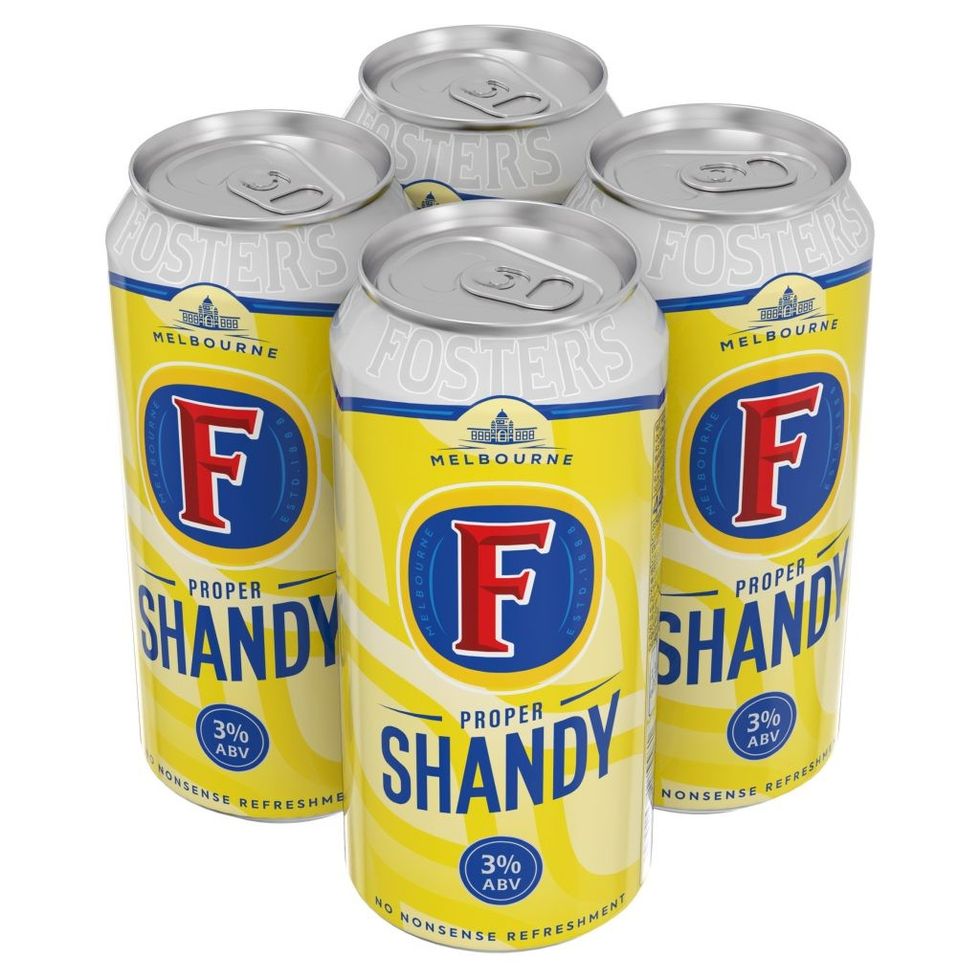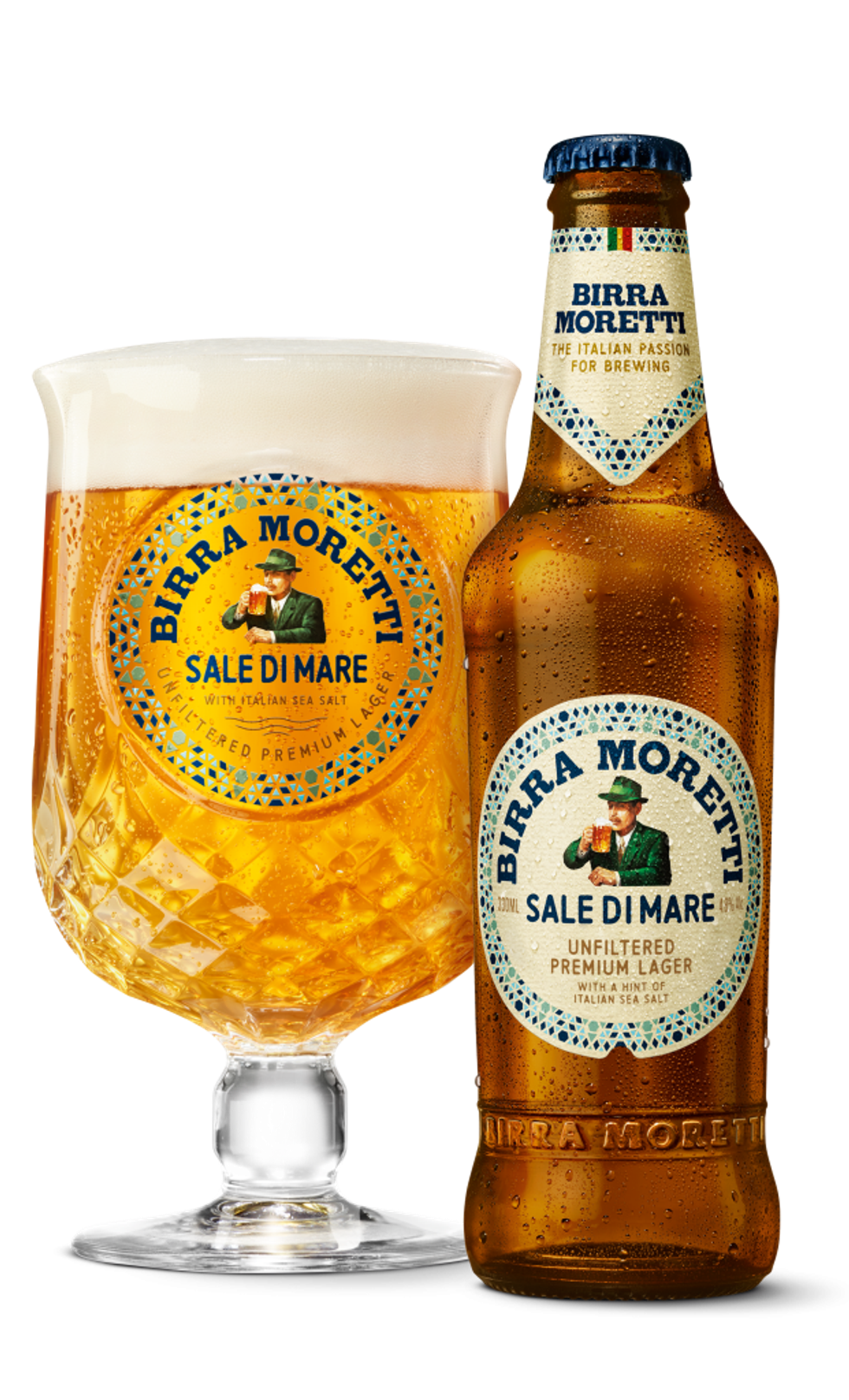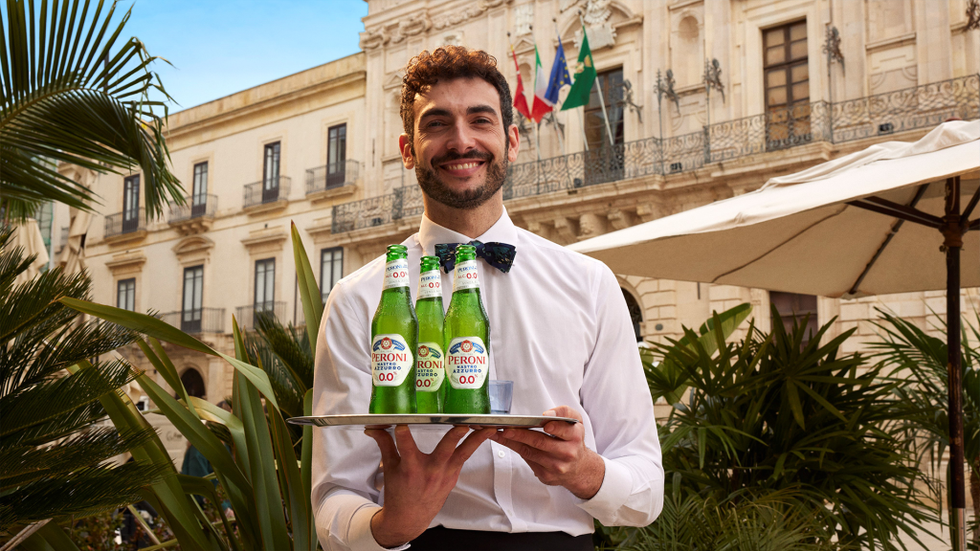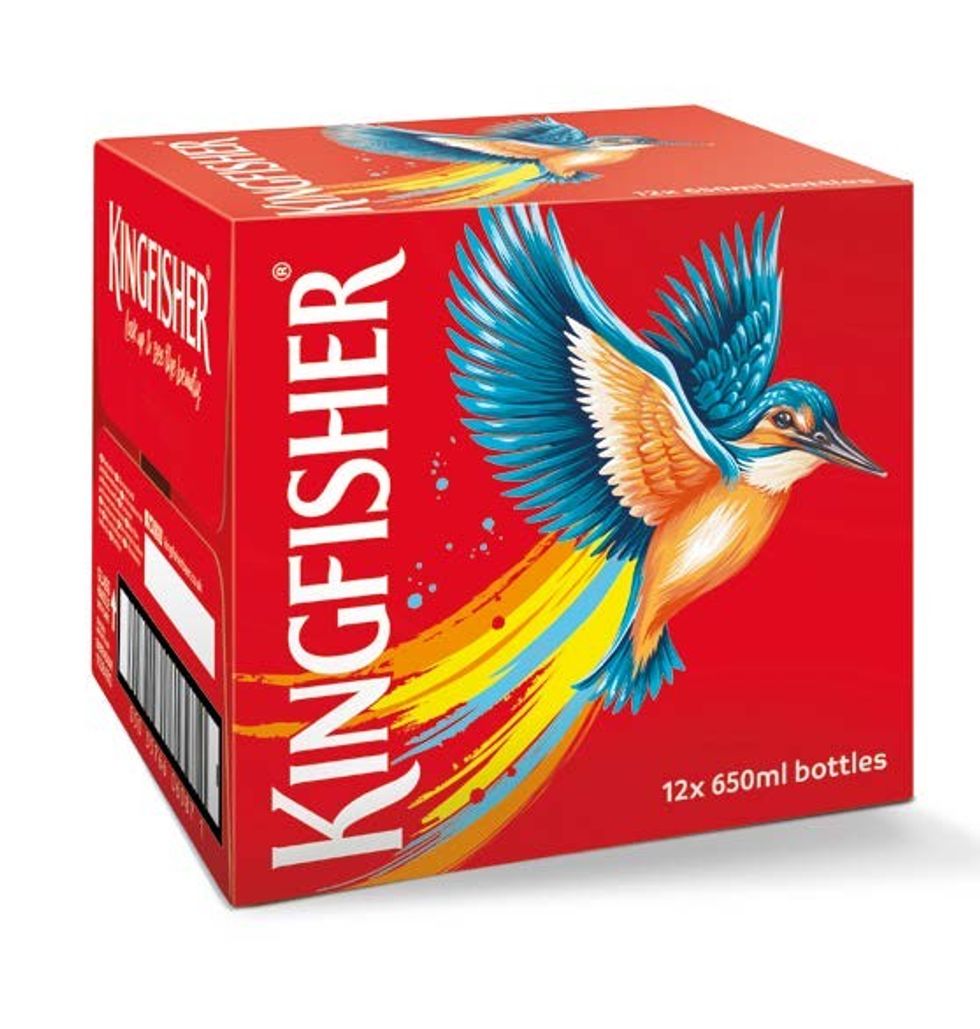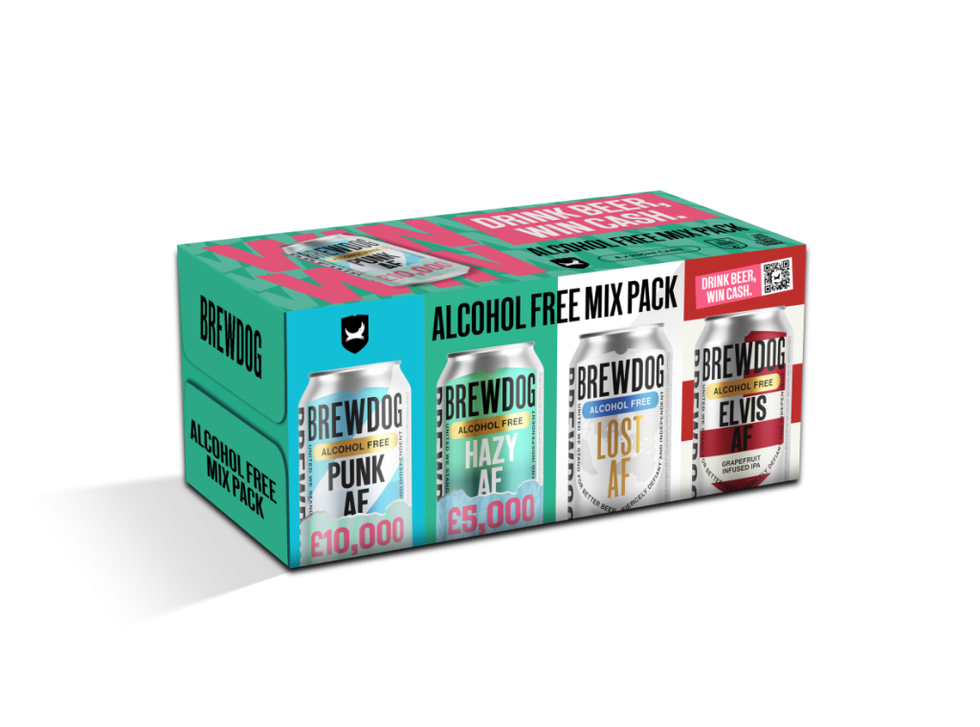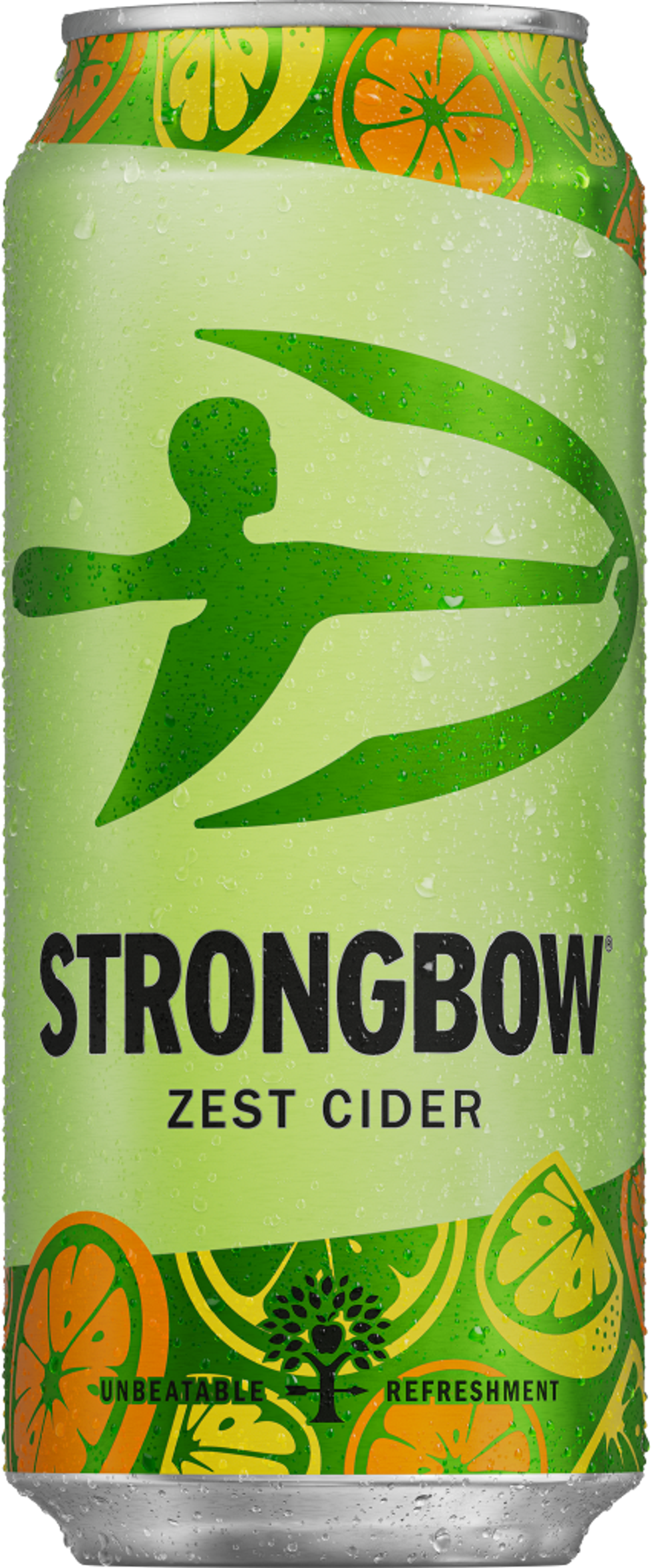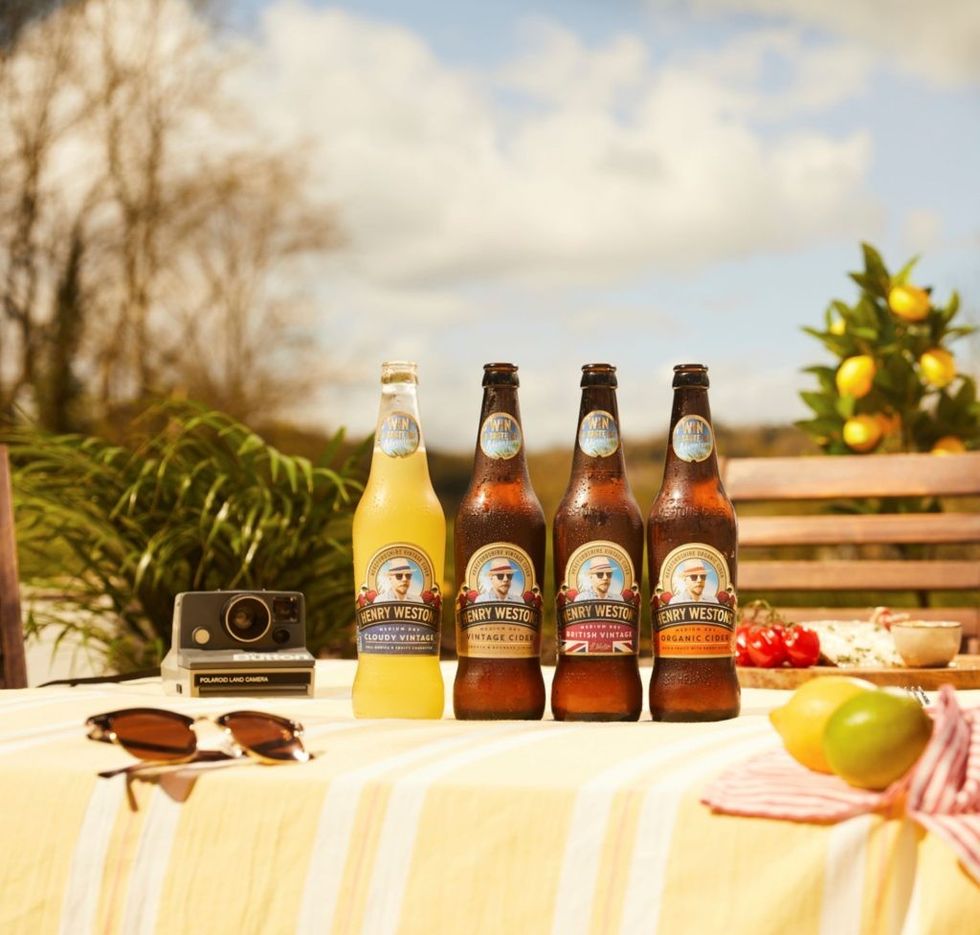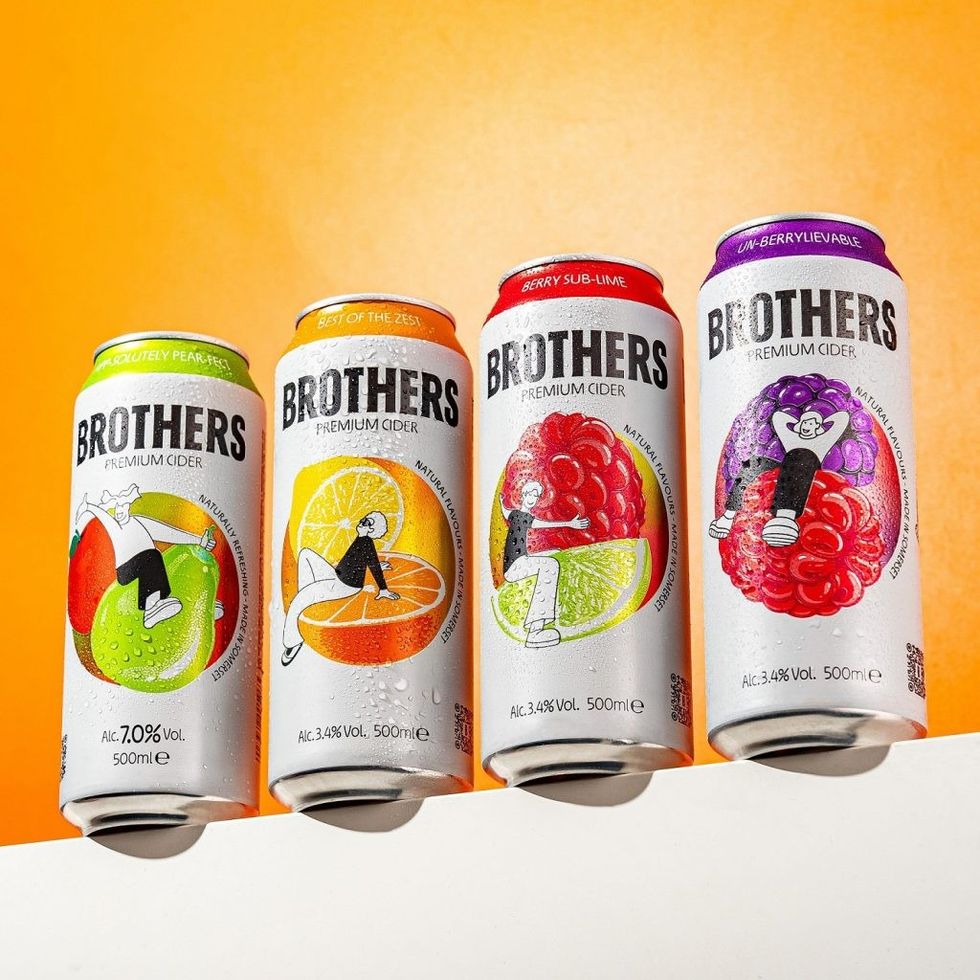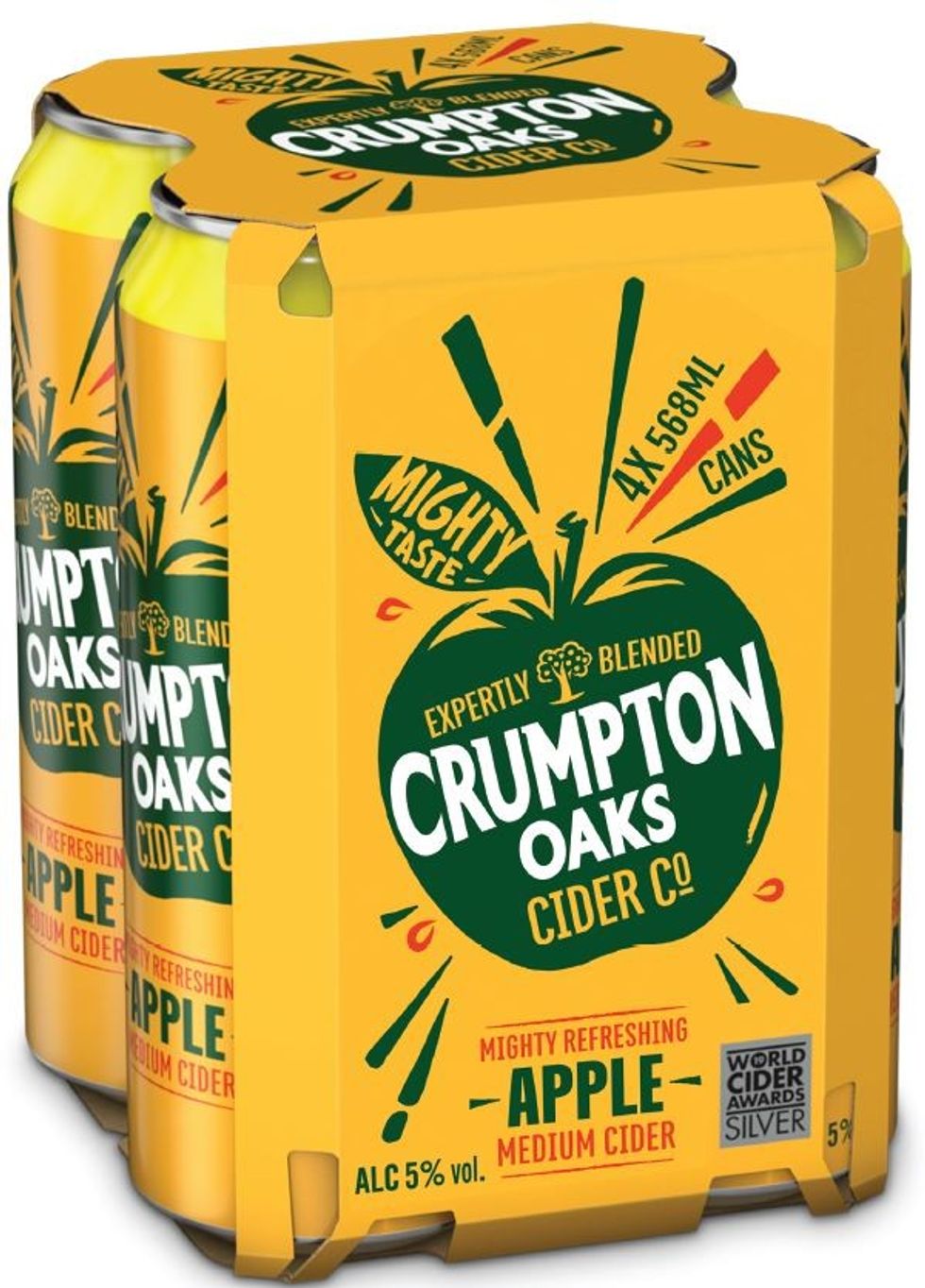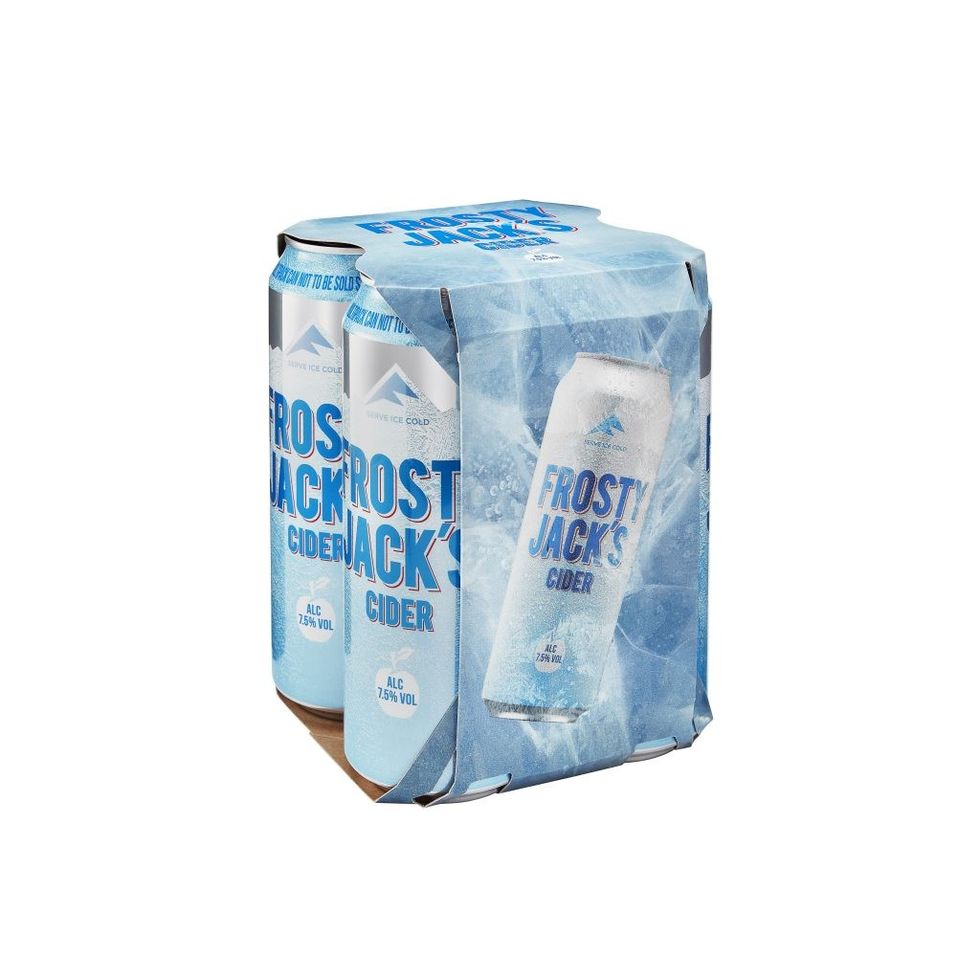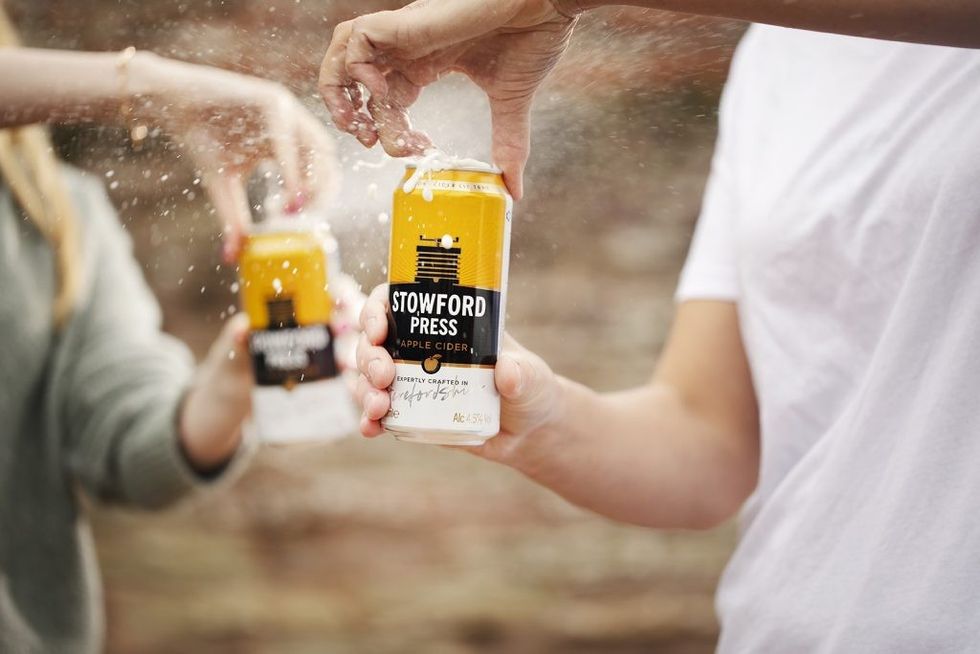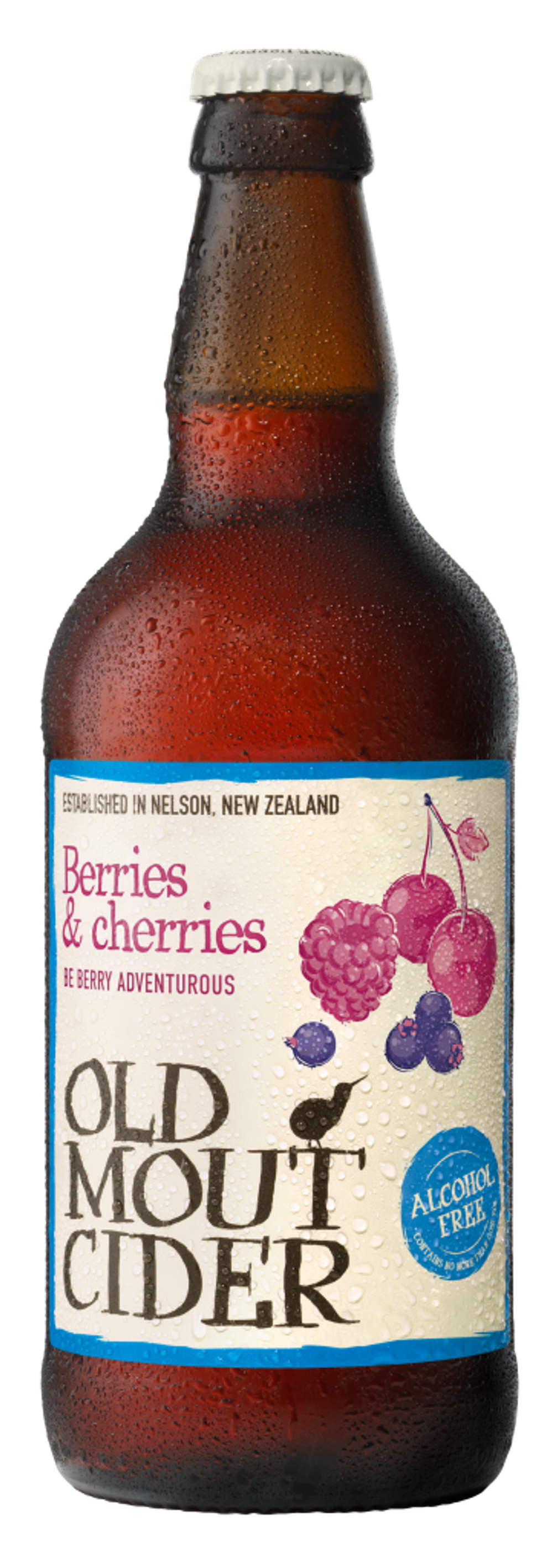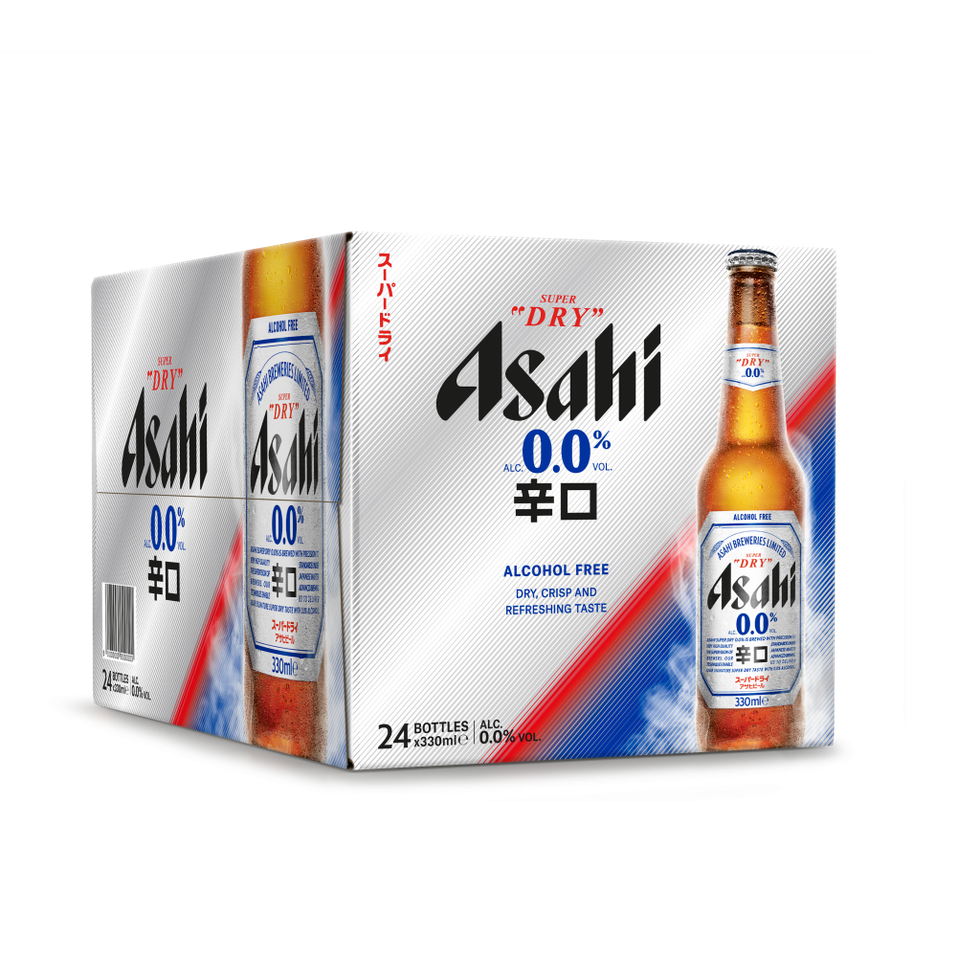A thirsty nation turns its sights to the beer cave as the weather warms up and outdoor living beckons – time to get your range racked right!
Summer is on the way and despite the ongoing economic stresses, a nation eagerly looks toward the season of BBQs, parties and festivals – all of which are often accompanied by an ice cold beer.
Beer and lager (and similar liquids such as cider) are still the UK's most popular alcoholic refreshments. According to the Family Food report by the Department for Environment, Food & Rural Affairs, an average of 497ml of beer/lager and 82ml of cider was consumed per person each week in 2021/22 in the UK, compared to 232ml of wine and 71ml of spirits.
And the country’s thirst is relatively unaffected by inflation, perhaps transferring to an extent from on to off-trade under price pressure, but remaining consistent.
“Total beer is having a good year in Convenience, up in both value and volume,” said Caitlin Brown, category executive at BrewDog PLC.
“Britain is well known for its changeable weather, so sales peak substantially when the sun is shining and the temperature increases, as shoppers flock to gardens, parks and beaches to soak up the fleeting rays. And with this summer full of celebratory sporting events, we expect our shoppers to be socialising even more with their favourite beer in hand.”
The total beer category in the UK has grown to be worth an impressive £5.5 billion, driven by increased interest in new formats, innovation and styles. Within grocery, the category is worth £3.6bn, while in impulse, including convenience and independent stores, this figure stands at £1.5bn [NielsenIQ].
Evolving tastes
Alexander Wilson, category & commercial strategy director, Heineken, says more customers across all demographics are keen to explore new styles of beer, including world lagers.
“This is where innovation from familiar brands comes into play, as people are gravitating towards NPD from brands they are familiar with – such as Birra Moretti’s new Sale di Mare variant. While classic lager remains a core category for retailers to focus on, and drives purchase, introducing new sub-brands into the mix presents a clear trading up opportunity, especially as we venture into the warmer months,” he says.
“In fact, research has identified an opportunity to offer curious drinkers seeking more flavourful and interesting taste profiles, with an accessible premium twist,” he adds.
Heineken UK’s recent launches, Foster’s Proper Shandy and Birra Moretti Sale di Mare, look to tap into this opportunity.
“Foster’s Proper Shandy is designed to offer customers a quality beverage that can be enjoyed at home, as well as provide a point of difference in the lager segment, which we know to be the biggest segment in total beer,” Wilson says.
“The introduction also marks the first innovation within the classic lager category for decades, aiming to reignite the category and encourage exploration from consumers. Alongside this, the three per cent ABV caters to the two-fifths (40 per cent) of adults who say they want to moderate their drinking, providing an option for those low tempo, relaxed socialising and unwinding occasions.”
Birra Moretti Sale di Mare (4.8 per cent ABV) provides full-flavoured refreshment and is available now across the grocery, wholesale and convenience channels in multipacks of 4x330ml and single 660ml bottle.
Heineken UK commands an impressive 18.9 per cent share in value of beer and cider, and in lager specifically – a segment within beer to watch out for this year, Wilson notes – a 17.1 per cent share [NielsenIQ], amplified by having the largest media spend of out of all the brewers. Foster’s, Birra Moretti and Heineken have a combined value share of over 11 per cent in the beer category.
A shift in buying habits over the past year, as more people switched from wine to beer, has also helped, with beer penetration sitting at 60 per cent across the UK [Kantar].
Wilson suggests retailers consider stocking a variety of formats to cater for all occasions, from at-home gatherings to grab-and-go and summer festival moments, as all pack formats in beer and cider experience a massive jump in sales during peak seasons, including summer occasions.
“In beer, we are seeing this growth in smaller and medium pack sizes, especially of cans, being driven by people making smaller, but more frequent visits to stores,” he notes.
John Price, head of marketing at Kingfisher Drinks, bats for larger pack formats even as he also stresses the need to stock a variety of standard and premium brands in a range of formats.
“Having a good selection of chilled products is always key, but particularly so during major international football tournaments like the Euro’s which we have coming up very shortly,” he says.
“To ensure they don’t miss out on any lost sales, its important retailers have plenty of larger pack formats on offer, as well as a good selection of chilled products for immediate consumption. It’s also a good idea to clearly sign-post any promotions you are doing in-store, as well as use your social media channels to let your regular customers know what’s going on and why they should visit your store.”
Price adds that pairing beers and ciders with food is “still an under-explored opportunity” for retailers to consider when trying to drive incremental sales.
“So, for example, if they are eating Indian food, then pairing it with the only authentic Indian beer brand, Kingfisher, is a great idea, or perhaps if they are eating a Nandos-inspired meal, then pairing it with an authentic Portuguese lager like Sagres.”
Premium opportunity
Asahi has identified three growth opportunities within beer retailers should be aware of. The first is no- and low-alcohol beer, worth £10m and growing at 13 per cent. The second two come from both ends of the value scale. Premium four-pack cans are worth £96m and growing at 14 per cent, while four-pack pint cans are worth £269m [Nielsen Scantrack].
There are two segments in decline, however, Steve Young, sales director at Asahi UK, says retailers should still dedicate fixture space to these.
“Economy/mainstream four-packs is the second biggest segment in beer, worth £245m, but is declining at -18 per cent as consumers trade up into premium. Craft beer, meanwhile, is worth £25m is declining at 17 per cent. We recommend retailers dedicate 10 per cent of their fixture to each of these segments,” he suggests.
“Within chilled beer (excluding ale), 96 per cent of sales are lager, two per cent is stout, one per cent is craft and 0.7 per cent is no- and low-alcohol beer. Young recommends retailers dedicate 40 per cent of their range to large single bottles and three- and four-packs.
“Large single bottles are worth £254m, while three- and four-pack bottles are worth £95m. These should be merchandised at eye level/the middle of the fixture,” he said.
From the Asahi stable, Peroni Nastro Azzurro 620ml is the most important large lager bottle in impulse, with value sales of £18m. Asahi Super Dry 620ml is another must stock, growing at 14 per cent.
Among three- and four-pack bottles, Peroni Nastro Azzurro Capri 3x330ml is new to the market, launching in the sunshine beer category, and 4x330ml is the number-one by value RoS in the premium segment. Asahi Super Dry 4x330ml is also a key SKU for the brand, growing at 7 per cent.
Tyskie 4x500ml is an impulse staple and is the fourth largest premium brand in impulse with high shopper loyalty.
John Price, of Kingfisher Drinks, also highlights the premium opportunity.
“The beer and cider landscape has been on a continual journey of premiumisation for a while now, where we’ve seen consumers increasingly willing to spend more to treat themselves to better quality and authentic beer options, which in turn drives increased value in-store,” he opines.
“Even the challenging financial times we’ve been in and are still going through, don’t seem to have dissuaded consumers that this is the path they want to go on, as many still treat premium alcohol as an affordable luxury which they feel is worth paying for.”
As consumers enjoy discovering premium world lagers from all sorts of different places, Price observes that these would be a “great option” for retailers to stock, as they can “typically be charged at a minimum of 30 per cent more” than other more mainstream options.
“Whilst there’ll always be demand for Mediterranean beers which of course remain popular, I’d encourage convenience retailers to think beyond that and look further afield. There’s certainly considerable current interest in Japanese beers like our Sapporo, but I’d also like to mention Indian beers like our very own Kingfisher, which has a crisp and easy-drinking taste that consumers love,” he adds.
Touching upon the authenticity debate, where some consumers place real value in a product that is a genuine import and is brewed in its home country, Price notes that there is a trade-off that can’t be ignored in this.
“Importing beer comes with a much higher cost and undeniable environmental consequences. At Kingfisher Drinks, we strive to brew beer in the UK in order to hit the price points our customers expect and reduce the carbon footprint of the finished product,” he says.
Crafty sales
Craft beer, which has seen a decline in growth in 2022, is bouncing back, registering 25.6 per cent year-on-year increase in value in the impulse channel, according to Circana.
“As a category, beer is driven by brands, so what we tend to see is shoppers trading through tiers and formats, from standard lager to premium/world lager and craft beers to meet their budget,” said Caitlin Brown, of BrewDog.
“Kantar reported that of 34 beer, wine and spirit categories, only seven saw penetration growth in 2023, and of those leading the growth, were Low and No Alcohol (+1.3pp) and Craft Beer (+0.2), which both welcomed new shoppers,” she added.
Among craft beers, BrewDog’s Punk IPA is the most popular and best-performing style of beer all year round in convenience, and Brown recommends retailers to stock their top two products, Punk IPA and Hazy Jane New England IPA 4 can multipacks, as an initial offering.
Multipacks continue to be a key growth driver for the category, with 38 per cent of value sales in Convenience going through 330ml can four/six packs, growing 15 per cent YoY. The four-can pack in particular, remains the most important craft beer format throughout the year with 49.1 per cent value share.
“In fact, research shows that 50 per cent of first-time purchases come from multi-packs, and larger mixed formats significantly over index with first time buyers, with 51 per cent of craft beer shoppers repeating their category purchase, following their first trial,” Brown noted, adding that the 440ml single can format is also seeing a significant +210 per cent rise in Impulse, driven by consumers looking to reduce their basket spend during the cost-of-living crisis.
“So, as we head into the warmer months and summer socialising increases it is important to have a mix of these formats available in the chiller to meet the increased demand and different shopper needs,” she says.
BrewDog has recently launched its new session IPA, Wingman (4.3 per cent ABV), in the impulse channel, driving additional value into craft beer.
Formats available include single 440ml can (RRP: £2.50), 4x 330ml can multipack (RRP: £6.25) and 12x330ml can (RRP: £16.50).
And this summer, BrewDog is cooling down the beer aisle with the launch of new Cold Beer (3.4 per cent ABV), using historic brewing techniques from the Kolsch style, fermenting the beer with an ale yeast but at the lower lager temperature. Recognising the growing requirement for low ABV beer, as consumers continue to moderate, it is available in Booker in 10 x 440ml (RSP £9.00, launching at £7.99).
Ciders: The unique appeal
Summer is the perfect season to drive cider sales, as consumers seek refreshing beverages to beat the heat. In the UK, the total cider category is worth £1.1bn and in grocery, this figure sits at £689m, and in convenience at £384m [NielsenIQ, FY 2023].
The category has firmly returned to its pre-pandemic norms, with the off trade now making up 38 per cent of value sales and 63 per cent of volume, according to the Westons Cider Report 2024. Within this, the convenience channel represents half of sales, meaning there is room to grow and take advantage of category driving trends and the ongoing consumer shift towards drinking less but better.
“With the continued squeeze on households’ disposable incomes, showcasing value for money is important, but this isn’t necessarily always about price. This is all about consumers drinking less frequently, but choosing higher quality options which tend to command higher price points when they do, a trend we don’t expect to stop any time soon,” Sally McKinnon, head of marketing at Westons Cider, comments.
“And with convenience retailers making up 50 per cent of the total off-trade category, the good news is that there is further room to grow to take advantage of consumers’ changing tastes.”
In cider, Heineken UK has identified that apple cider is growing ahead of flavoured cider, with premium options also doing exceptionally well, signalling to retailers that despite customers cutting corners in other categories, cider is potentially where they are willing to trade up.
“There is a great opportunity for stores to capitalise by stocking up on bestselling cider brands, including Strongbow Original, Strongbow Dark Fruit and Inch’s, all of which have strong brand recognition and a loyal customer base, with value shares of 12 per cent, 7.2 per cent and 2.8 per cent, respectively [NIQ,],” said Alexander Wilson of Heineken UK.
“These brands also offer customers a range of flavours to explore – ranging from apple to citrus and berry varieties. This is particularly important because cider drinkers are more likely to buy into the category when tempted by innovation, and the appeal of a new flavour from their favourite brand.”
Heineken UK is launching a new zesty innovation from Strongbow, which commands a 21 per cent market share in the total cider category. Strongbow Zest (ABV four per cent) is a thirst-quenching apple cider carefully blended with lime, lemon and orange flavours. The zesty mix of limes, lemons, and oranges brightens up the classic crisp apply-ness for a fresh citrusy taste.
Available across grocery, wholesale and convenience channels from June, Strongbow Zest is rolling out now in 4x440ml and 500ml formats, and in time for the summer in 10x330ml.
Apple cider has grown share, now at 63.7 per cent, and flavoured cider is worth 35.3 per cent. Premium and super-premium cider share is up by two per cent vs two years ago [Nielsen Scantrack].
“In comparison to beer, cider commands a slightly lower average price per litre (£2.46 vs £2.59) as it is weighed down by the prevalence of budget cider,” Steve Young, of Asahi UK, observes. “However, premium cider carries an average price per litre of £3.37 vs £3.21 in beer, indicating there is an opportunity for retailers to premiumise their ranges.”
Asahi’s Cornish Orchards is currently valued at £1.3m and is growing at two per cent. Gold contributes 53 per cent of its value, with Vintage showing the strongest growth. With an average price per litre of £4 – well above the average price per litre of £2.46 – it sits in the super-premium tier, which makes up 13.7 per cent share of the category.
“We advise retailers to merchandise Gold and Vintage alongside craft ciders. The new flavoured variants should sit alongside more expensive flavoured cider brands,” Young suggests.
The recently published annual Westons Cider Report revealed that premiumisation continues to be a key trend for cider drinkers, as shoppers are trading up to more expensive products. McKinnon says that it’s the crafted apple brands that are delivering on this through heritage, provenance, and the authentic nature of crafted and cared-for apple cider.
“Crafted cider is going from strength to strength, growing 7.9 per cent YoY in the convenience sector in the last year. Averaging £4.19 per litre in convenience – compared to an average of £2.70 for the total cider market – crafted products like these are guaranteed to grow revenue for retailers,” she says.
With the distribution of crafted cider in convenience sits at only 94.5 per cent versus virtually 100 per cent in multiple retail, there is still headroom for further crafted growth in the convenience channel.
“Naturally, this presents an opportunity for convenience retailers to increase profits by stocking up on crafted cider, especially the UK’s number one cider, Henry Westons Vintage. In fact, more than one bottle is sold every second across the UK with sales figures more than £19.4m in convenience ahead of next best-selling product on the market,” McKinnon says.
The flavour question
Brothers Cider introduced the category’s first ever flavoured cider to the UK back in the 1990s and the recently relaunched brand approaches a very busy summer in excellent health, supported by its biggest-ever marketing package, including an all-new advertising campaign which has just gone live.
“Lager, beer and cider are important, year-round categories but they experience a peak in sales across the summer months – and this peak is especially prominent for cider, and then even more so again for flavoured ciders as these variants really come into their own during the warmer weather,” comments Nicola Randall, head of marketing at Brothers Drinks Company.
Their new range is available from Bestway, Booker, Dhamecha, Parfetts and Philip Russell, among others and to support the relaunch, a major campaign of consumer activity has commenced this month, running throughout the summer.
Another key pillar of the brand’s 2024 support package is their close association with Glastonbury Festival, as they signed a new contract to continue their long-standing status as the Official Cider of Glastonbury Festival, the world’s largest greenfield music and performing arts festival.
“It is 29 years since Brothers Cider was first served at the world-famous festival – and it has featured at every gathering since – and the association has thrived over the decades. While most can’t attend year after year, they can recreate the festival vibe and enjoy the free-spirited taste of Glastonbury in a can in their own home by buying Brothers from convenience stores,” Randall says.
She says field sales team is busy working with independent retailers nationwide to ensure increased throughputs.
Calli O’Brien, head of marketing at Aston Manor Cider, suggests that drinkers might be moving away from flavoured ciders in favour of more traditional recipes as the category is down 13 per cent and declining ahead of the total market [Nielsen]. A prime example of this is Crumpton Oaks, which is the number one value apple cider brand in GB impulse.
“The reality is we are all making savings to varying extents. Not just to make ends meet, but to also be able to afford the things we value most,” O’Brien comments.
“Aston Manor’s ethos is all around affordability. We are here for shoppers, helping them to save with our affordable cider, allowing them to focus their spend on what really matters. Our range provides shoppers with an affordable, great-tasting solution, so they can be assured they are not compromising when needing to spend a little less cash on cider.”
Offering more affordability to customers as they look to tighten their belts is the new range of Frosty Jack’s pack formats.
“The new packs come in at a number of different recommended retail price points to help provide shoppers with better value without trading down on quality. This is especially important given that rising food and drink prices is the top concern for almost half (49 per cent) of shoppers,” O’Brien says.
The Frosty Jack’s RRSP range includes a 1L bullet bottle price marked at £2.99, a 1.5L bottle price marked at £3.99, and a larger 2L offering price marked at £4.99. Non priced marked options are also available.
Impulse choice
The 500ml glass bottle is a format that does particularly well in cider, followed by 4x400ml and 10x400ml can formats.
“However, we appreciate and understand that not all stores, including some smaller independents, might have space for 500ml bottles, and if this is the case, we recommend they focus on the 4x440ml and 10x440ml packs,” Wilson suggests.
“Alternatively, Old Mout is available in a 330ml can format, which is not only a format that has grown in popularity over the past few years, but also one that requires less fridge and shelf space, and helps retailers offer a high-quality cider option to their customers.”
As cider is the impulse drink of choice, O’Brien asks retailers to offer a 100 per cent chilled range of options for customers to buy, take home, and enjoy straight away.
“When a shopper buys cider on impulse, having it chilled and ready to drink are often more important than price, however, promotions still play an important role in communicating value for money that will help to win longer term customer loyalty,” she says.
“Further to that, a third of shoppers only ever buy cider in cans, so it is important that retailers stock both bottles and cans to provide choice for consumers,” she adds. “Frosty Jack’s and Crumpton Oaks Cider come in both pack formats.”
McKinnon, of Westons Cider, stresses the need for offering chilled cider. “Simply put, shoppers don’t want to buy lukewarm cider, so if retailers haven’t got the temperature right, they will miss out on sales,” she cautions.
Brothers Cider’s Randall also emphasises that this could be the sure-fire way for independents to beat the competition from the supermarkets.
“The three best ways that independents can out-manoeuvre the multiples are chilling, chilling and chilling,” she says.
“The prominent availability of chilled products is essential to meet the requirements of impulse shoppers and, importantly, offers something not widely available in the multiple grocers. A full chiller will always pay dividends in the summer months and the importance of chilling to meet the needs of spontaneous purchasers can’t be over-stated.”
In the warmer months, consumers seek out chilled cider, and independent retailers will benefit from keeping these two equations in mind, she adds:
Summer sunshine = cider sales
Cold stock = sold stock
“The winning formula is to focus on products that are chilled – or at least easier for consumers to chill (i.e. cans), products that are easy to carry and won’t break (i.e. cans) and products which have something new or interesting to say (i.e. are new-to-market or recently relaunched),” Randall says.
Larger multi-packs are another key consideration, ensuring shoppers not only have a greater variety of choice, but can also keep their home supply stocked up. “Product packs, such as the pint cans in our Crumpton Oaks four-pack, are a popular option to enable consumers to keep their supply topped up with single-serve options,” O’Brien says.
McKinnon also agrees that larger pack formats are popular choices, particularly during the summer months and match days when cider sales spike.
“Multipacks are also always a go-to for summer events, so it would be wise to stock these outside of the chillers, somewhere easy for shoppers to see,” she says, noting that, besides the best-selling Henry Westons Vintage, their Stowford Press cans continue to perform brilliantly, experiencing growth of 33.3 per cent YoY in total off trade, outgrowing total mainstream cans at -6.1 per cent [Kantar].
The Stowford Press ten Pack is experiencing growth of 636.3 per cent YoY in convenience, and the four pack +34.7 per cent YoY [Circana].
Randall advises retailers to be merchandise lagers, beers and ciders in three discrete blocks.
“Yes, some consumers will walk into a store with a completely open mind about what they intend to buy but the vast majority will have a pre-determined category preference so it’s important to ‘block’ similar drinks together to suit the majority of shoppers and make their experience as straightforward as possible,” she reasons.
“Within these distinct blocks, it’s important to display prices clearly and use POS to highlight special offers or new products.
“The key factors are to stock something for everyone; to back brands with high-profile support as these will be top-of-mind for consumers; and to offer shoppers innovative new products.”
The rise and rise of low and no
The no- and low-alcohol beer and cider category presents retailers with a huge opportunity to grow profits this year, as more and more consumers seek to moderate their alcohol intake, or choose to abstain, by switching to no- and low-alcohol alternatives of their favourite beer and cider brands.
Overall, the category is worth £152m in grocery and £18.6m in impulse, with no- and low-alcohol cider worth £18m, and no- and low-alcohol beer worth £154m in the total market [NielsenIQ]. From a wider category perspective, the total market grew by 33.5 per cent in January 2024, with no- and low-alcohol beer growing by 19.3 per cent, and no- and low-alcohol cider by 12.3 per cent in 2023.
Nielsen consumer insights also reveal that in the four weeks to December 2023, the category grew by a huge 43 per cent in value, adding £4.2m in sales. This is in comparison to overall beer category growth of just 0.6 per cent, making it clear that many people were not waiting until January to moderate their alcohol consumption.
“More than £30m was added to the no- and low-alcohol beer category last year, and this was in part due to prices have risen ahead of the total beer category (+8.2 per cent), with non-alcoholic beer having grown by 11.8 per cent on average in terms of price litre,” said Alexander Wilson.
“However, sales increases can also be attributed to health trends pervading the market, where we have seen more younger people conscious of how much they are drinking, and so are opting for non-alcoholic versions of their favourite brands, such as Heineken 0.0, which in 2023, was the number one non-alcoholic beer brand in the market, with value sales of £27.3m, having grown by 5.3 per cent.”
He highlights the massive opportunity for retailers to get ahead of peak summer sales by stocking up on bestselling no- and low-alcohol brands before the rush commences, including Birra Moretti Zero and Old Mout 0.0, the latter of which is available in fruit-flavoured variants, which over index in the summer.
“Mindful consumption is also shaping trends in the cider category, and low- and no-alcohol options, such as Old Mout 0.0, which is available in Pineapple & Raspberry and Berries & Cherries flavours, is helping to drive this,” he notes.
He advises retailers to consider merchandising and ranging no- and low-alcohol separate to its alcoholic counterparts.
“Having a separate display clearly signposts to consumers that they can rely on the store to provide them no- and low-alcohol products, and that the store owner has put effort into curating the category, and therefore will have the latest products available,” he says.
Asahi Europe & International’s ambition is for 20 per cent of its core product portfolio to offer alcohol-free products by 2030 and Asahi UK has identified an opportunity for independent convenience retailers to increase no- and low-alcohol sales by £32m in 2023.
“No- and low-alcohol beer is the strongest growing beer sector, currently growing at 13 per cent. However, these products are not widely distributed in convenience, with the market leading SKU currently at only 29 per cent weighted distribution,” Steve Young of Asahi UK points out.
He recommends stocking Peroni Nastro Azzurro 0.0% 4x330ml, which is the top alcohol-free beer product by rate of sale in the convenience channel, presenting a trade-up opportunity. The launch has added more than £4m to the category since it entered the market.
Asahi Super Dry 0.0%, which entered the market in January 2023, is benefiting from the brand’s sponsorship of Manchester City Football Club.
Kingfisher Drinks has recently announced the arrival of Kingfisher Zero, which embodies the quality and flavour of Kingfisher Premium, but without alcohol and, most importantly, without compromising on taste. Another option from the company is Sagres 0.0% which comes in packs of 24 x 330ml cans or bottles and is suitable for both vegans and vegetarians.
Independents thrive on their ability to curate offerings carefully tailored for their target consumers. As summer approaches and customers prepare for BBQs, picnics, and festivals, retailers are presented with a golden opportunity to maximise sales. With convenience continuing to be a top priority for consumers, seizing this moment is paramount.
“When the sun shows its face, consumers want to enjoy cold drinks on their way to a BBQ, beach party or social gathering in the park; what they don’t want to do is drive to a supermarket, wander round unnecessary extra aisles, buy ambient stock, drive home … and wait hours while it chills down,” Randall says.
McKinnon adds: “The challenge lies in limited fixture space, especially compared to supermarkets. To compete effectively with larger chains, convenience retailers should prioritise fridge facings, while utilising ambient fixture space and stacking for larger packs.”






